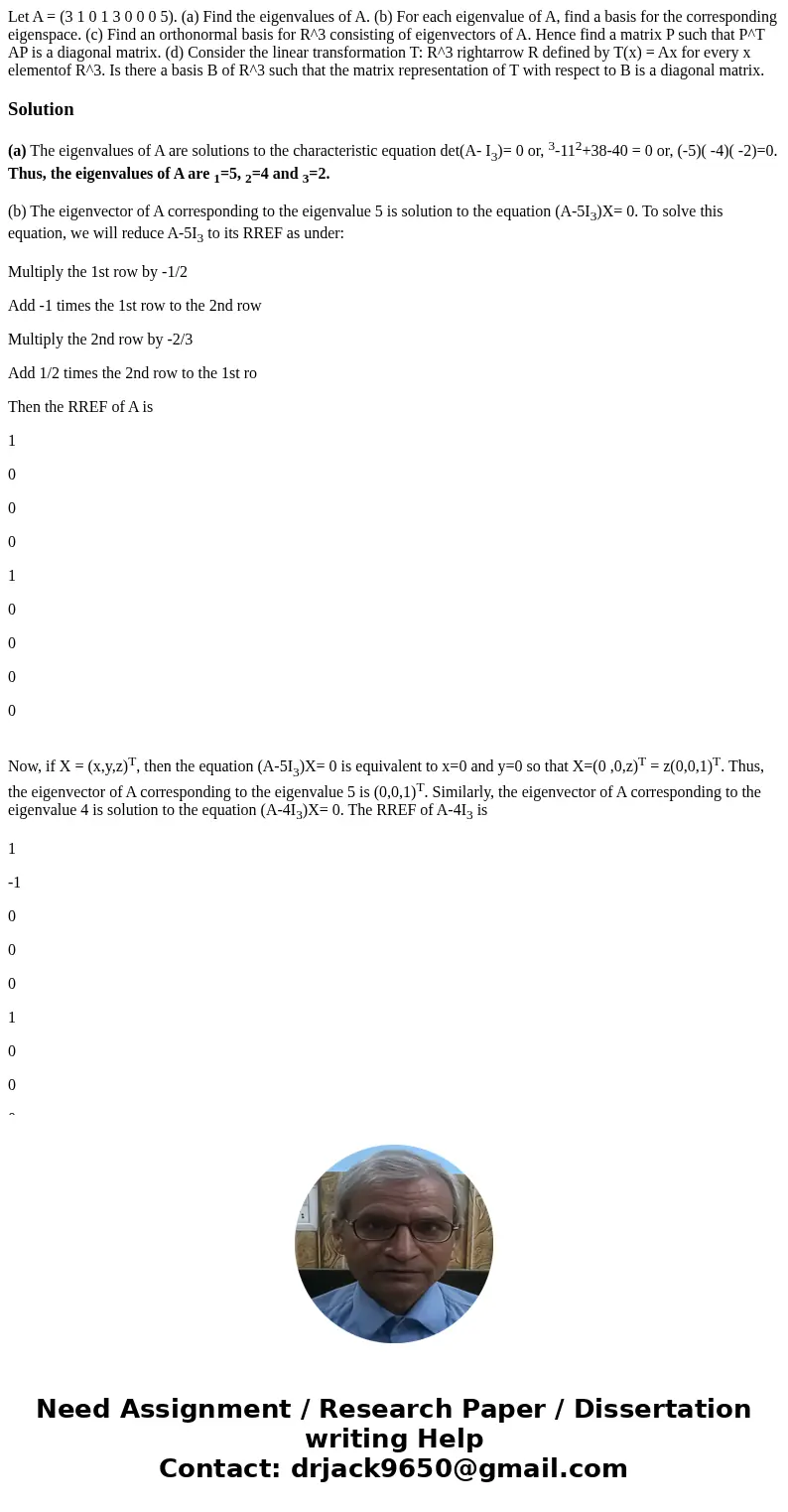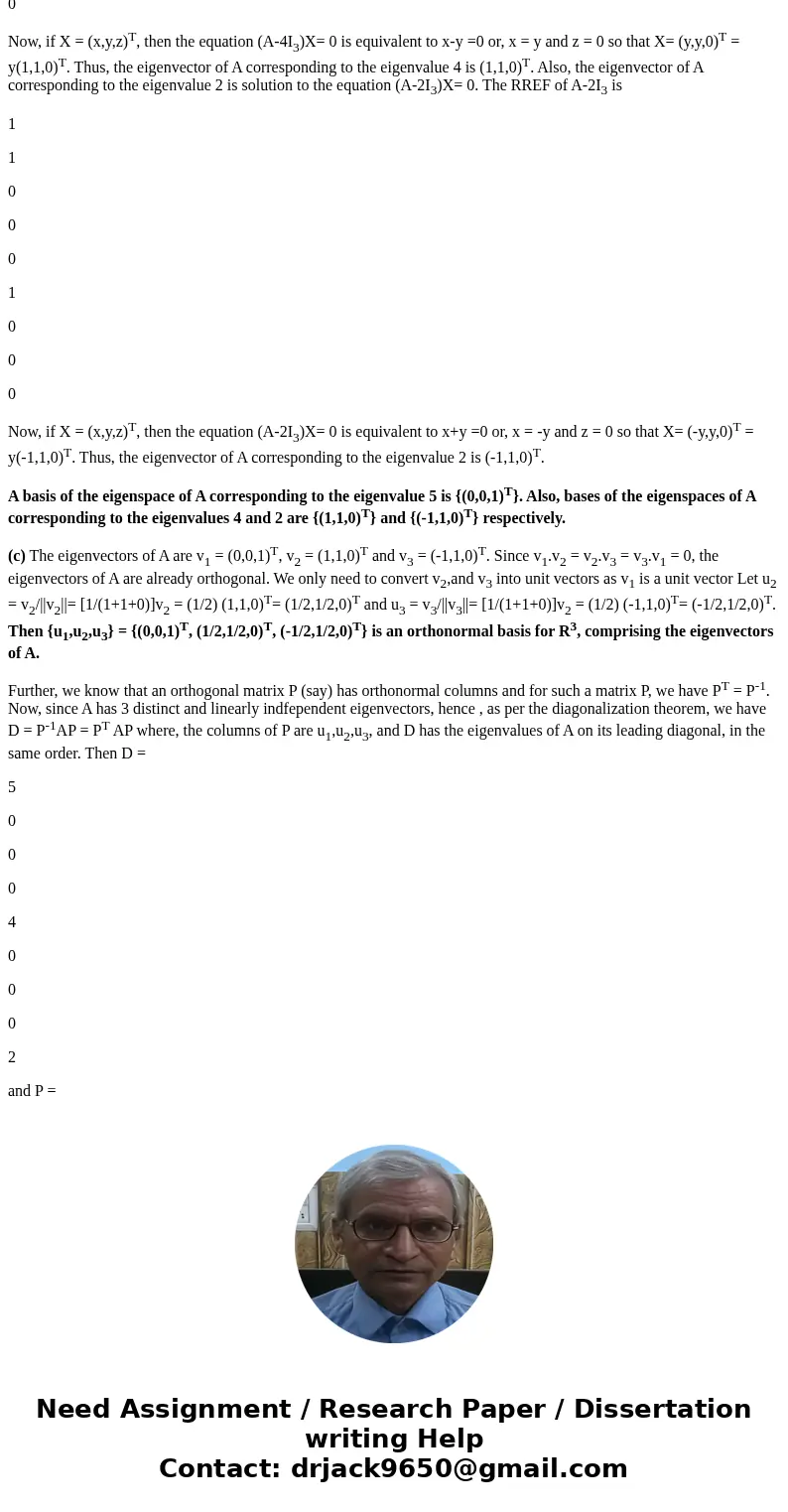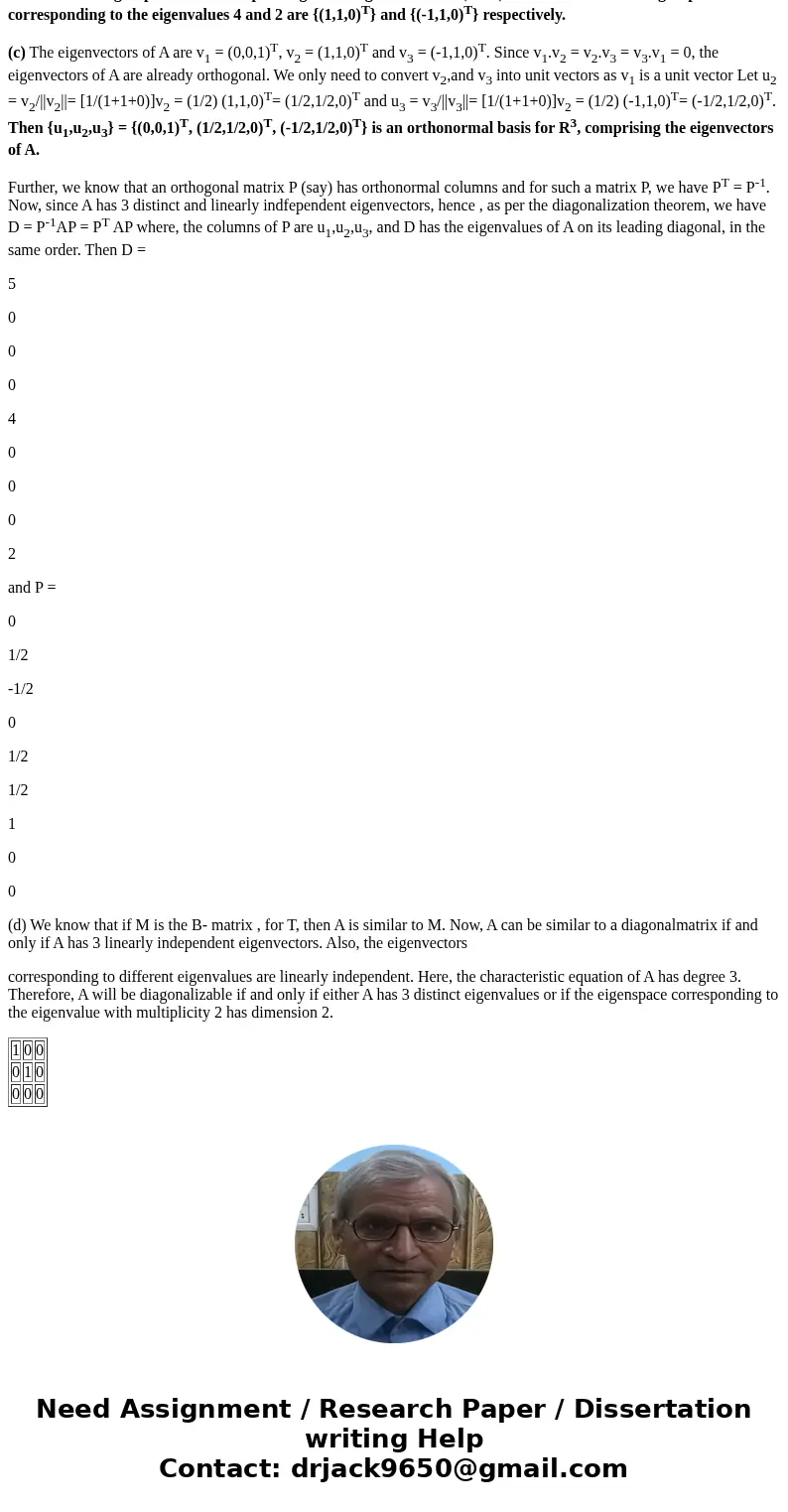Let A 3 1 0 1 3 0 0 0 5 a Find the eigenvalues of A b For e
Solution
(a) The eigenvalues of A are solutions to the characteristic equation det(A- I3)= 0 or, 3-112+38-40 = 0 or, (-5)( -4)( -2)=0. Thus, the eigenvalues of A are 1=5, 2=4 and 3=2.
(b) The eigenvector of A corresponding to the eigenvalue 5 is solution to the equation (A-5I3)X= 0. To solve this equation, we will reduce A-5I3 to its RREF as under:
Multiply the 1st row by -1/2
Add -1 times the 1st row to the 2nd row
Multiply the 2nd row by -2/3
Add 1/2 times the 2nd row to the 1st ro
Then the RREF of A is
1
0
0
0
1
0
0
0
0
Now, if X = (x,y,z)T, then the equation (A-5I3)X= 0 is equivalent to x=0 and y=0 so that X=(0 ,0,z)T = z(0,0,1)T. Thus, the eigenvector of A corresponding to the eigenvalue 5 is (0,0,1)T. Similarly, the eigenvector of A corresponding to the eigenvalue 4 is solution to the equation (A-4I3)X= 0. The RREF of A-4I3 is
1
-1
0
0
0
1
0
0
0
Now, if X = (x,y,z)T, then the equation (A-4I3)X= 0 is equivalent to x-y =0 or, x = y and z = 0 so that X= (y,y,0)T = y(1,1,0)T. Thus, the eigenvector of A corresponding to the eigenvalue 4 is (1,1,0)T. Also, the eigenvector of A corresponding to the eigenvalue 2 is solution to the equation (A-2I3)X= 0. The RREF of A-2I3 is
1
1
0
0
0
1
0
0
0
Now, if X = (x,y,z)T, then the equation (A-2I3)X= 0 is equivalent to x+y =0 or, x = -y and z = 0 so that X= (-y,y,0)T = y(-1,1,0)T. Thus, the eigenvector of A corresponding to the eigenvalue 2 is (-1,1,0)T.
A basis of the eigenspace of A corresponding to the eigenvalue 5 is {(0,0,1)T}. Also, bases of the eigenspaces of A corresponding to the eigenvalues 4 and 2 are {(1,1,0)T} and {(-1,1,0)T} respectively.
(c) The eigenvectors of A are v1 = (0,0,1)T, v2 = (1,1,0)T and v3 = (-1,1,0)T. Since v1.v2 = v2.v3 = v3.v1 = 0, the eigenvectors of A are already orthogonal. We only need to convert v2,and v3 into unit vectors as v1 is a unit vector Let u2 = v2/||v2||= [1/(1+1+0)]v2 = (1/2) (1,1,0)T= (1/2,1/2,0)T and u3 = v3/||v3||= [1/(1+1+0)]v2 = (1/2) (-1,1,0)T= (-1/2,1/2,0)T. Then {u1,u2,u3} = {(0,0,1)T, (1/2,1/2,0)T, (-1/2,1/2,0)T} is an orthonormal basis for R3, comprising the eigenvectors of A.
Further, we know that an orthogonal matrix P (say) has orthonormal columns and for such a matrix P, we have PT = P-1. Now, since A has 3 distinct and linearly indfependent eigenvectors, hence , as per the diagonalization theorem, we have D = P-1AP = PT AP where, the columns of P are u1,u2,u3, and D has the eigenvalues of A on its leading diagonal, in the same order. Then D =
5
0
0
0
4
0
0
0
2
and P =
0
1/2
-1/2
0
1/2
1/2
1
0
0
(d) We know that if M is the B- matrix , for T, then A is similar to M. Now, A can be similar to a diagonalmatrix if and only if A has 3 linearly independent eigenvectors. Also, the eigenvectors
corresponding to different eigenvalues are linearly independent. Here, the characteristic equation of A has degree 3. Therefore, A will be diagonalizable if and only if either A has 3 distinct eigenvalues or if the eigenspace corresponding to the eigenvalue with multiplicity 2 has dimension 2.
| 1 | 0 | 0 |
| 0 | 1 | 0 |
| 0 | 0 | 0 |



 Homework Sourse
Homework Sourse